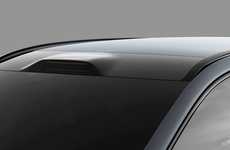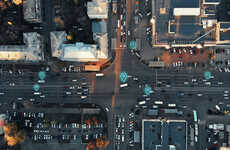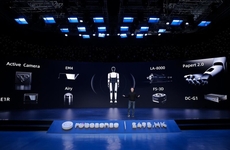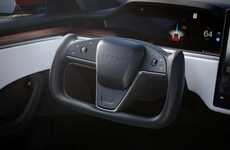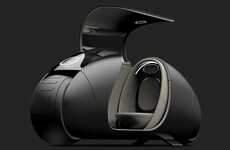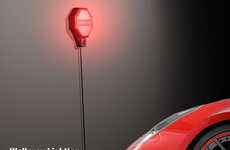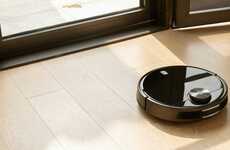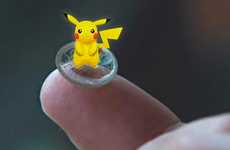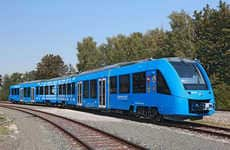
This LiDAR Sensor Uses Laser Detectors to Identify Obstacles
Rahul Kalvapalle — September 20, 2016 — Autos
References: velodynelidar & newatlas
Silicon Valley-based technology company Velodyne has developed an innovative new LiDAR sensor, dubbed the Puck Hi-Res due to its visual resemblance with a hockey puck, that is designed to empower self-driving vehicles with smart technologies to help them ebtter detect obstacles ahead of them.
This particular LiDAR sensor features an array of laser detectors that are arranged at very miniscule degree intervals, meaning that the margin for error is masively mitigated. This radar setup also allows for imagery to be captured in a highly precise manner, and means that the sensor is capable of detecting objects at a great distance than ever before.
While self-driving cars are an exciting development, they do come with a variety of safety concerns, which is precisely what the Puck Hi-Res sensor aims to assuage.
This particular LiDAR sensor features an array of laser detectors that are arranged at very miniscule degree intervals, meaning that the margin for error is masively mitigated. This radar setup also allows for imagery to be captured in a highly precise manner, and means that the sensor is capable of detecting objects at a great distance than ever before.
While self-driving cars are an exciting development, they do come with a variety of safety concerns, which is precisely what the Puck Hi-Res sensor aims to assuage.
Trend Themes
1. Enhanced Lidar Sensors - The development of LiDAR sensors with improved precision and detection capabilities presents opportunities for autonomous vehicles to better navigate and detect obstacles.
2. Advanced Laser Detectors - Incorporating more advanced laser detectors in LiDAR sensors enables self-driving cars to detect objects at greater distances, enhancing safety and obstacle avoidance.
3. Precise Obstacle Detection - The use of LiDAR sensors with high resolution and precise imaging capabilities allows self-driving cars to spot obstacles with greater accuracy, reducing the risk of accidents.
Industry Implications
1. Automotive - The automotive industry can leverage enhanced LiDAR sensors to improve the safety and functionality of self-driving cars.
2. Technology - The development of advanced laser detectors and LiDAR sensor technologies presents disruptive innovation opportunities in the technology industry.
3. Robotics - The precise obstacle detection capabilities of LiDAR sensors open up new possibilities for autonomous robots, revolutionizing industries that rely on automation and navigation.
4.1
Score
Popularity
Activity
Freshness

